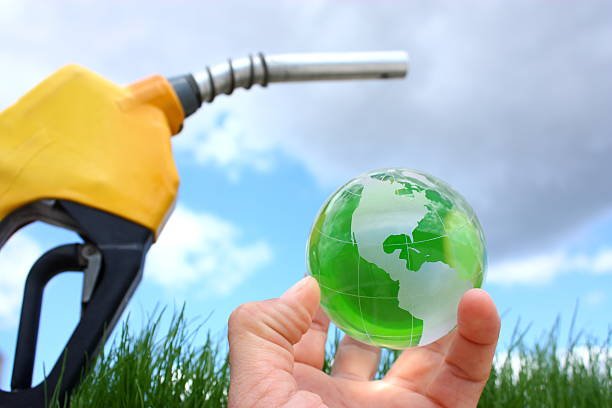As India also gears up for the potential introduction of 3G ethanol derived from algae, the economic challenges are likely to intensify.
India’s ambitious push towards ethanol blending has hit a roadblock. The 2G ethanol production programme, once touted as a game-changer, is now facing significant challenges due to high production costs. While the government’s ambitious target of 20% ethanol blending by 2025 remains, the economic viability of 2G ethanol production is increasingly coming under scrutiny.
The crux of the issue lies in the production cost of 2G ethanol, which hovers around Rs 160 per litre. This price point, comparable to the price of premium 100-octane fuel, used in luxury cars and motorcycles, makes it difficult for oil marketing companies (OMCs) to absorb the additional cost without government support.
Parallelly, even original equipment manufacturers (OEMs) are also asking for some tax rebates and other incentives as modifications are required to be made in the engines for running vehicles with a higher ethanol percentage of fuel.
Further, as India gears up for the potential introduction of 3G ethanol derived from algae, the economic challenges are likely to intensify. The higher production costs associated with 3G ethanol could further strain the OMCs and the overall ethanol blending programme.
Alok Sharma, Director, R&D at Indian Oil, during the recently concluded Infineum Conference in Jaipur, said, “They (Government) have allowed different prices for different types of fields that are used for making ethanol. But once you come to 2G ethanol and 3G ethanol, the prices are higher. Even the OMCs have approached the government to give a special price, but the government has not agreed there.”
Sharma was speaking during a panel discussion moderated by Hormazd Sorabjee, Editor, Autocar India, and also had RM Petkar, President and Chief Technology Officer, Tata Motors, and Chris Locke, executive vice president of commercial at Infineum as other participants.
“In 1G ethanol, the cost is not an issue for the producers right now,” Sharma noted.
The rising complexities in higher generations of ethanol
The three generations of biofuels—1G, 2G, and 3G—are distinguished by their feedstocks, manufacturing
processes, and associated costs. While 1G biofuels, derived from food crops such as sugarcane, corn, and wheat, are relatively inexpensive and straightforward to produce, their reliance on edible resources raises concerns.
2G biofuels, on the other hand, employ non-food, cellulosic biomass such as agricultural residues and woody biomass. However, producing them is a more complex process, requiring pretreatment to break down cellulose and hemicellulose into sugars, followed by fermentation.
Finally, 3G biofuels, primarily derived from algae, involve cultivating the organism in controlled environments before extracting oils and converting them into ethanol. This approach, though promising, is still in its nascent stages and faces significant technological and economic hurdles.
Mandate requirements key:
“So, unless we have a mandate there, we also will not be interested in producing 2G ethanol because the price is coming in at about 160 rupees a litre; so that’s the problem with 2G ethanol,” the top executive highlighted. Sharma, however, noted that with the number of manufacturing plants coming up, the cost is likely to come down going forward.
In the Ethanol Supply Year (ESY), which runs from November to October, the blending of ethanol with petrol stood at 38 crore litres with a blending percentage of 1.53% in ESY 2013-14. By ESY 2020-21, the blending volume surged to 302.3 crore litres, increasing the blending percentage to 8.17%. During this same period, petrol consumption also rose by approximately 64%.
The momentum continued, with blending further increasing to over 500 crore litres in ESY 2022-23, raising the blending percentage to 12.06%. In the current ESY 2023-24, the blending percentage surpassed 13% with approximately 545.05 crore litres of ethanol blended as of August 31, 2024. “This remarkable progress underscores a significant increase in the overall ethanol blending percentage, rising from 1.53% in 2014 to an impressive 15% in 2024,” the government release stated.
As per government records, over the past decade, this initiative has delivered significant benefits, including savings of Rs 1,06,072 crore in foreign exchange, a reduction of CO2 emissions by 544 lakh metric tonnes, and a substitution of 181 lakh metric tonnes of crude oil. Furthermore, the programme has had a considerable economic impact, with OMCs disbursing Rs 1,45,930 crore to distillers and Rs 87,558 crore to farmers.
To achieve the target of 20% ethanol blending by 2025, approximately 1,016 crore litres of ethanol will be required. The total demand for ethanol, including other uses, is estimated to be around 1,350 crore litres. To meet this requirement, an ethanol production capacity of about 1,700 crore litres must be established by 2025, assuming the plants operate at 80% efficiency.
Way forward?
The road ahead for India’s ethanol blending programme is fraught with challenges, particularly concerning the economic viability of 2G and 3G ethanol production. While significant progress has been made in 1G ethanol blending, the higher production costs of the subsequent generations pose a significant hurdle.
Unless the government implements supportive policies, including price incentives and tax breaks, the ambitious target of 20% ethanol blending by 2025 may prove difficult to achieve. It remains to be seen whether the government will take proactive steps to address these challenges and ensure the long-term sustainability of India’s ethanol blending programme.





